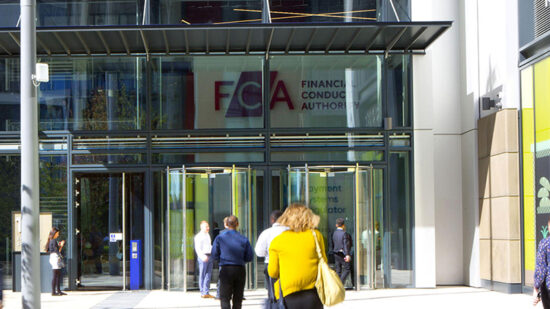Chief executive and founder John Greenwood’s busy meeting schedule has seen him positioning the business in the international space, in markets such as the Middle East, Latin America and Africa, though 35% comes from the UK and just 5% from the Isle of Man.
“There’s little point in banging your head in a very competitive space. With certain types of client we can add a lot of value and we just seek those out, which is labour intensive and expensive, but it provides rewards for both sides,” he says.
The investment operation comprises 15 people and is run from the smart head office on the island’s capital Douglas, under Creechurch’s head of private wealth Arthur Malloy, whose background includes stints with RBS and Thomas Miller.
Trend analysis
Rather than stockpicking, the investment philosophy focuses on the big trends in asset classes over the long term, including a notably positive stance on property.
There is also the matter of marrying up the “short-term world” needs of clients who are looking for weekly, monthly and quarterly updates on portfolio returns.
A core satellite and top-down approach involves building a macro picture, with score cards for the asset classes to determine the positives and the negatives, which Greenwood says is very similar to the way in which institutional investors and high net wealth individuals go about structuring their investments.
“They tend to be risk averse, they have the capital and therefore they can get a sensible return over the long term. Consistency of return and lack of surprises is what they crave more than anything else.”
Creechurch’s institutional style therefore requires close measurement of risk, which it has managed to offer clients in a low entry package that would normally take the form of more retail-oriented discretionary fund management services.
At £100,000, the minimum investment for a bespoke portfolio, which gives access to the private wealth service, is a direct consequence of Creechchurch’s move into the international market.
Greenwood explains there were a lot of people with £250,000 to £500,000 to invest, and to satisfy introducers who did not want any of their clients to be excluded the lower level was introduced.
“It does not work below that figure but we’ve managed to maintain the cost to client and the risk at the same level all the way down to £100,000.
“We are very comfortable with what we provide and because we are allocators through collectives rather than individual stocks, we do not in any way expose our clients to greater risks.
“The other part about institutional asset management is very orientated towards communications and service, which is our number-one standout in terms of how we approach our client base.”
Creechurch aligns with some of the specialist or big fund names to provide collective fund solutions to ensure finite resources are not diluted by spending time looking at particular stocks. “We can chop and change between those providers without any restrictions” says Greenwood.
“We’re keen to capture the 90% movement in the markets through asset allocation and we don’t worry too much about missing out on particular niches. A lot of time can be spent risk-taking on chasing the final 5% or 10% of a return, rather than the more easy to gain 90% of the return that we strive for.”
Punt on property
Greenwood talks through the house view on the fixed-income sector, which last year performed strongly.
“We were positioned in the corporate space and therefore the clients benefited from the high double-digit returns on their portfolios there.
“But we are a strong believer that the fixed-income 30-years-plus bull run is at, or near, the end and therefore we have gone significantly underweight on fixed income across the board, only retaining exposures in certain corporate or overseas fixed income markets.”
The 10% underweight in fixed income has been re-allocated to alternatives, exclusively in property or property-related investments.
“That’s across the whole spectrum of property because I believe we are at the start of what will be a multiyear positive trend in property.
“Our view is not unique. Companies like Prudential and Aviva have all made moves into residential property for the first time in 30 years as they are seeing the return profile looking very attractive and the volatility more akin to fixed income.”
Everything flows
The educational message to clients is that the portfolio is not looking for “capital gains tomorrow” but a good income flow of between 7% and 8%.
This will give a great counter to the inflationary forces that will emerge with a vengeance now that growth is returning returns to the economies, Greenwood says.
“We are avoiding the one area that we really fear, which is that bubble in fixed income. And the downside of that bubble, very similar to the crash we had during the credit crunch, will be the surprise of how far the fixed income market will correct.”
He argues this is an area where a lot of people have not factored in the downside risk. “The worst part about it is even if you did factor in that risk you are not getting paid for that risk, so you should never be in an asset class where you are not getting paid.
“Far too many people with the market at highs are still invested there, and probably the very wrong people are invested there – the conservative investors.”
A 20% portfolio exposure to property sets Creechchurch apart from the house views of many other asset allocators. As Greenwood puts it: “We’re out of step with the peer group but we are bang in line with the asset allocation of the ultra high net worth, which is around 22% to 23% in real estate. The intelligent investor is looking for where there is value and isn’t driven by what happened last year or the year before.”
He drills down into how value has emerged in the commercial property market, where there has been a big correction with resulting stronger bank balance sheets that have allowed companies to write off loans and force sales through.
He sees value in the residential sector and financing within property, where some banks have exited certain aspects of lending. Student accommodation also continues to evolve with some areas under pressure and others representing good value.
All asset classes have the potential to bubble, so how does Creechurch guard against this, and specifically the liquidity issues around investing in property?
Greenwood answers first by saying that since he started his career in the ’80s, “every time I wanted income and low volatility I bought fixed income, so it’s very hard to change that mindset unless you take a big step back and look at the long-term trends and say, ‘Okay, what’s going to happen here?’”.
Avoiding predictability
He thinks if you get down to the nitty gritty of working with niche funds and niche opportunities then you have greater insight and control, and also ensure that the managers understand what went before and do not make the same mistakes again.
The entry points for making an investment are also key so set up the parameters for the returns, and with property the terms of tenant covenants are very important to ensure the plan can provide liquidity.
“With a mixture of long-term holds with shorter-term development plays, there’s an awful lot of different aspects to property that have to be brought into account to make sure you don’t go down a generic route that is disappointing to everybody.
“Eventually, too much money will chase a finite resource and it will bubble again. And if you happen to be overleveraged at a poor value entry point then it will be disappointing.
And you’ve seen that in the recent Brandeaux story, that’s a liquidity story not an actual asset story.”
The overall house view is positive on equities in combination with the low volatility of property, an underweight position in fixed income and no exposure to commodities, which has already had its move.
“I’m not the smart guy who says I participated in that move, because I didn’t. I can see that it happened and there is limited to no value there, and, more importantly, it does not generate an income.
Greenwood says Creechurch’s clients are long-term thinkers as long as there is a sustainable income level being generated by the portfolio to fund their retired (or soon-to-be-retired) lifestyles, rather than a young capital-acquiring client who can take a low income view over the medium term.
“Every market continues to evolve and when there is value and the ultra high net worth go for it, I think a boutique investment manager should mimic that – and the mainstream views later will adjust.”








